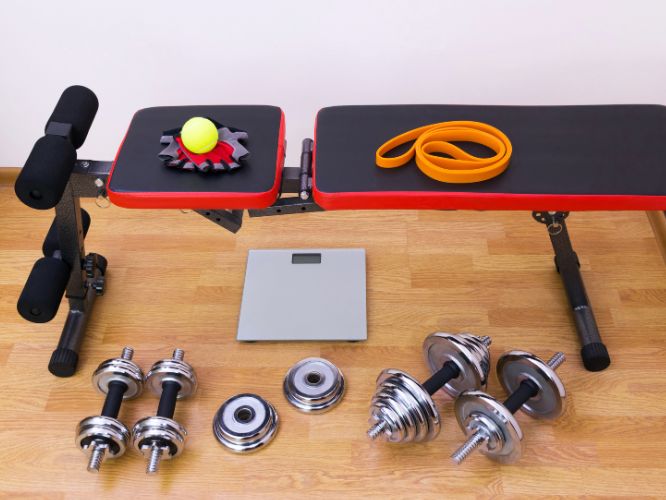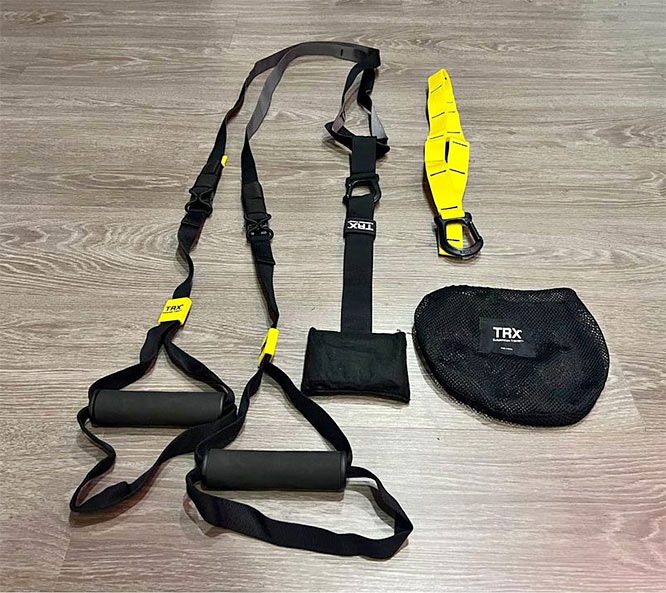Ever thought about setting up a gym at home but worried about the space and cost? You’re not alone, and the good news is, it’s totally doable with a minimalist approach. A home gym doesn’t need to be filled with bulky equipment to be effective.
By choosing a few versatile items, you can meet all your fitness goals without taking over your living space or breaking the bank. Let’s dive into how you can build a functional, minimalist home gym that’s perfectly suited to your needs and lifestyle.
Understanding Your Fitness Goals
Before you start picking out gear, it’s important to think about what you want from your workouts. Are you aiming to build strength, increase flexibility, or boost your cardiovascular health? Your fitness goals will shape how you set up your minimalist home gym.
Choose equipment that can do multiple jobs. For example, adjustable dumbbells are great for everything from shoulder presses to squats, working various muscle groups with one tool.
A yoga mat is another multi-tasker—ideal for stretches, floor exercises, and even some high-intensity training.
By choosing versatile equipment, you make the most of your space and keep your gym setup simple and efficient. Let’s make sure each item in your gym has a clear purpose!
Essential Equipment for Starting Out
When starting out, many people choose a few key essentials for their minimalist home gym that deliver big on versatility and effectiveness. Here’s what tops the list:
Yoga Mat
Think of a yoga mat as the foundation of your home gym. It’s not just for yoga; it’s your go-to surface for a variety of workouts. Use it for Pilates, stretching, abdominal exercises, and more. It provides cushioning and support, reduces the risk of slipping, and defines your workout space neatly within your home.
Adjustable Dumbbells
These are a powerhouse of versatility. With adjustable dumbbells, you can perform bicep curls, tricep extensions, chest presses, and leg workouts—all with the same set of weights. They are perfect for progressive strength training as you can increase the weight as your fitness level improves.

Kettlebells
A kettlebell can be your best friend in a minimalist gym setting. It’s ideal for strength and endurance training, combining cardiovascular, strength, and flexibility workouts. Swing, snatch, and squat your way to a toned body with just this single piece of equipment.
Resistance Bands
Resistance bands are incredibly flexible tools, available in various strengths and lengths to suit a wide range of activities, from strength training to flexibility exercises. Some even come with handles for added convenience!
These bands are excellent for adding resistance to your usual exercises, boosting your strength training without the need for bulky weights. They’re also lightweight and portable, making it easy to fit in a workout wherever you might be. Plus, with the addition of pull-up bands, you can further expand your range of exercises, enhancing your ability to work on upper body strength effectively.
By starting with these essentials, you’ll be well-equipped to tackle a wide array of exercises, making the most out of every workout session in your minimalist home gym.
Additional Equipment to Consider
As you become more comfortable in your minimalist home gym setup, you might consider adding a few more pieces to enhance your workout options. Here are some great additions that still keep with the minimalist spirit:
Small, Adjustable Bench
A small, adjustable bench is incredibly versatile and can elevate your home workouts. Use it for bench presses, step-ups, and even as a prop for split squats.
Plus, you can integrate it with resistance bands to expand your exercise repertoire—think leg extensions or seated row exercises, which can significantly enhance both leg and arm strength training.

Jump Rope
Don’t underestimate the power of a jump rope. It’s compact, easy to store, and fantastic for cardiovascular health. However, it’s important to consider your environment. While perfect for outdoor use or if you have a dedicated workout space at home, it might not be suitable for everyone—especially if you live in an apartment where noise or space could be a concern. But if you have the room, it’s an excellent tool for a high-intensity workout.
TRX Suspension Training System
The TRX system offers a remarkable range of exercises that can enhance strength, balance, flexibility, and core stability with just one tool. Its design allows for portability and easy storage, making it ideal for a minimalist gym. However, you’ll need to ensure you have a strong anchor point or invest in a door anchor to make the most of TRX workouts.

With these additional tools, your minimalist home gym will not only cater to a wider range of exercises but also keep your workouts diverse and challenging.
Space-Saving Tips and Equipment
Setting up your minimalist home gym means making the most of every inch. Here’s how to keep your workout space efficient and tidy:
Choose Smart: Opt for equipment that serves multiple purposes and fits well in limited spaces. Items that are easy to store or don’t take up much room are key.
Foldable Exercise Bikes: Perfect for cardio workouts, foldable exercise bikes can be tucked away under a bed or in a closet when you’re done, freeing up space.
Portable Pull-Up Bars: These can be attached to doorways for an upper body workout and removed when not in use, avoiding any permanent changes to your home.
Go Vertical: Use wall space for storage. Install shelves for weights and hooks for hanging resistance bands or even a wall-mounted folding squat rack if you have the room.
With these simple tips, you’ll keep your home gym practical and clutter-free, ready for a workout whenever you are.
Setting Up Your Space
Creating an effective workout area in a small or rental space doesn’t have to be a challenge. Here’s how you can efficiently arrange your minimalist home gym to keep things functional and flexible:
Start with a Plan: Before you bring in any equipment, visualize where each piece will go. Consider the flow of movement during workouts and try to keep your space uncluttered.
Use Multi-Functional Furniture: If possible, use furniture that can double as storage or workout supports, like ottomans that store yoga mats or sturdy chairs that can be used for step exercises.
Keep it Mobile: Choose equipment that’s easy to move. This flexibility is especially useful in rentals where you might need to clear the space quickly or adjust layouts often. Equipment on wheels, lightweight mats, and collapsible items are perfect.
Respect Your Space and Others: Particularly in apartments, consider how your workouts might impact neighbors. Opt for quieter activities during early or late hours, and use mats to dampen noise from aerobic exercises or weight training.
By thoughtfully setting up your space, you ensure your home gym is not only practical but also respects the limitations and possibilities of your living environment, keeping your fitness routine on track without overwhelming your home.
Expanding Your Home Gym
As you get more into your workouts, you might start thinking about adding a bit more gear to your home gym. Here’s how to do it smartly without spending a fortune:
Check What You Need: Before buying anything new, think about what’s missing from your workouts. Maybe there’s a muscle group you’re not hitting or a new fitness goal you’re aiming for.
Add Small, Versatile Items: Instead of big, pricey machines, consider smaller, versatile pieces like a medicine ball or a balance board. They can mix up your routine without taking up much space or costing a lot.
Find Affordable Alternatives: You don’t always need the fancy brands. There are plenty of lesser-known companies that make great gear without the high price tag. Look up reviews and chat on fitness forums to find the best deals.
Go for Multi-use Gear: Always think about how many different ways you can use a piece of equipment. This helps you get the most bang for your buck and keeps your space tidy.
Shop Second-Hand: Check out used gear. A lot of people sell equipment that’s almost like new for less. Try online marketplaces, local ads, or even garage sales.
Buy Bit by Bit: There’s no rush to get everything at once. Buy new pieces gradually as you need them and as your budget allows.
With these tips, you can grow your home gym at your own pace, adding just what you need to keep your workouts fresh and challenging without overwhelming your space or wallet.
Conclusion
A minimalist home gym is all about making the most of what you have—keeping it simple, yet effective. It saves space, cuts costs, and allows you to focus on workouts that are tailored just for you. Start with the essentials and choose versatile equipment that can handle multiple exercises.
Remember, you can always expand your setup as your fitness journey evolves. Take it step by step, and you’ll create a home gym that not only fits your space but also supports your fitness goals perfectly. Keep it straightforward, keep it flexible, and watch your personal gym grow as you do.

